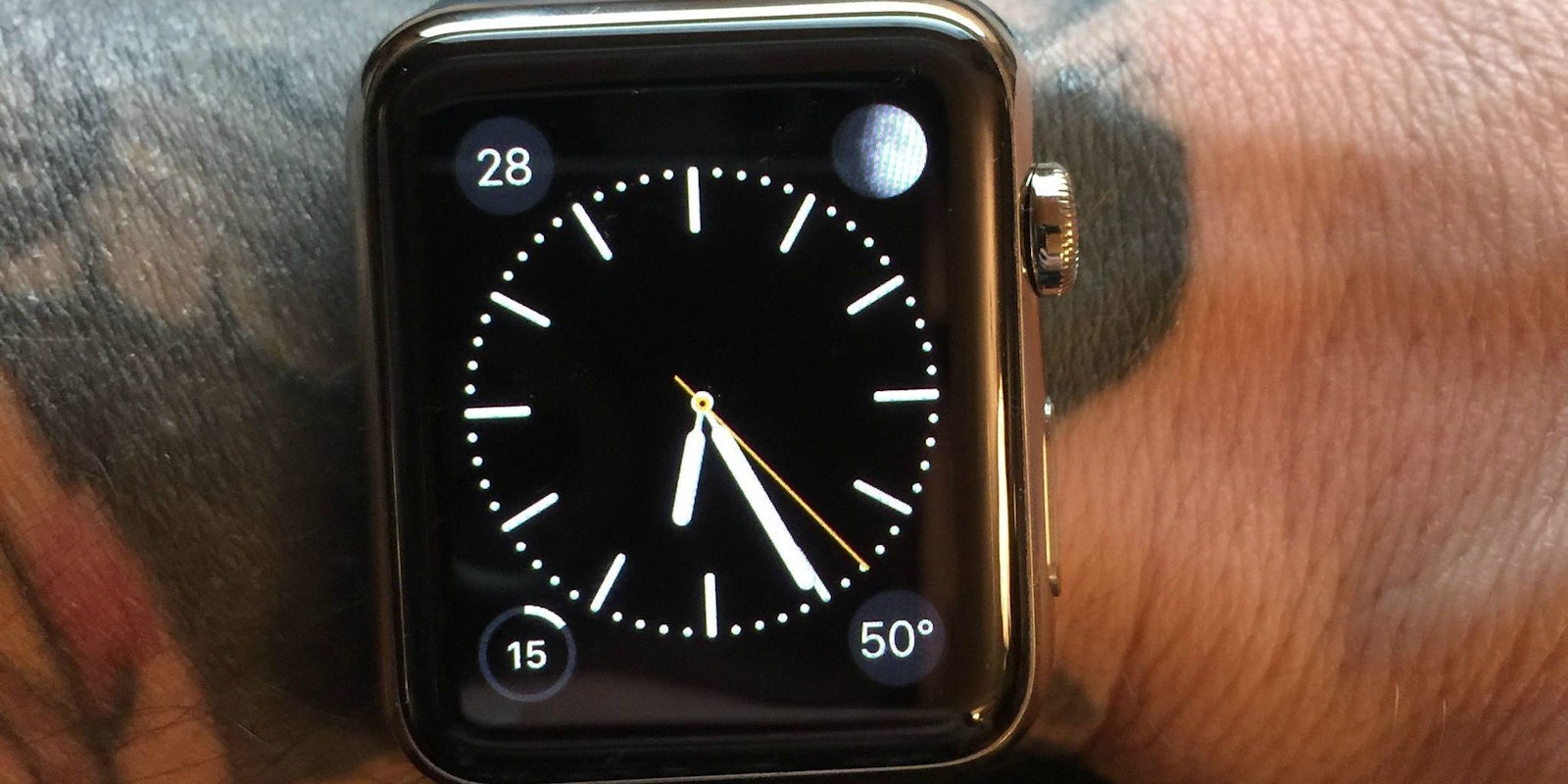Apple just dropped its new let’s-reinvent-the-wheel product, the Apple Watch, and already it’s having some problems. Tattoo ink underneath the device reportedly interferes with its sensors.
Tattooed redditor guinne55fan posted to /r/apple on Monday that he was having some trouble with his new toy.
“The watch would lock up every time the screen went dark and prompted me for my password. I wouldn’t receive notifications. I couldn’t figure out why especially since the watch was definitely not losing contact with my skin,” he wrote. Before calling up Apple for support, guinne55fan tried the watch on his other wrist, which was not tattooed, and suddenly everything worked again.
Guinne55fan’s not the only one having trouble. Twitter has already dubbed the situation #tattoogate.
https://twitter.com/Josh_Hunt/status/593093319028117504
https://twitter.com/swappopotamus/status/593152052341112833
It’s not yet clear why tattoos are causing problems but some think it has to do with the way the Apple Watch’s wrist sensor works.
“Wrist detection relies on light sensors on the back of the device which also serve as a heart rate tracker through a method known as photoplethysmography. By flashing infrared and/or green LED lights, the Watch can detect blood flow. Dark skin color could theoretically affect accuracy, although Apple states that the Watch will increase LED brightness and sampling rate to deal with tough reads,” Roger Fingas wrote on Appleinsider.
One redditor proposed a possible explanation:
“Oxyhemoglobin has several local peaks of absorbance which can be used for pulse oximetry: one green, one yellow, one infrared, etc. Apple uses the ones at infrared and green parts of the spectrum. Now, here’s some key facts. Melanin and ink are both equally good at absorbing frequencies over 500nm, which sadly includes the green. But, melanin’s absorbance falls down so rapidly that by the infrared end of the spectrum its hardly absorbing anything at all. That, combined with the fact that Apple adjusts the sensitivity/light level dynamically means infrared is probably black people friendly. Ink has a much more gradual fall off in absorbance, so even infrared might not work for them.”
In other words, the light sensors in the Apple Watch are calibrated to work with all different skin tones because the way they absorb light (which is not very well.) Tattoo ink, particularly black ink, absorbs light very well. So the watch is probably sending the light through the skin and never seeing it again, causing the problems.
Of course this is just a theory. But the folks at iMore did some testing and found that dark colors seemed to cause the most problems with the watch.
“Dark, solid colors seem to give the sensor the most trouble — our tests on solid black and red initially produced heart rate misreadings of up to 196 BPM before failing to read skin contact entirely. Tests on lighter tattoo colors including purple, yellow, and orange produced slightly elevated heart misreads of 80 BPM (compared to 69 BPM on the wearer’s non-tattooed wrist), but otherwise did not appear to interfere with skin contact registration,” Serenity Caldwell reported.
That would be in line with the theory, since darker tattoo inks absorb more light. The Daily Dot is reaching out to several experts for comment on what might be causing the issue. For now, turning the wrist sensor off the watch may fix the issue.
Screengrab via guinne55fan/Reddit


